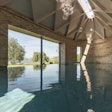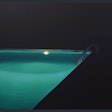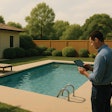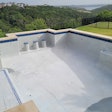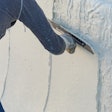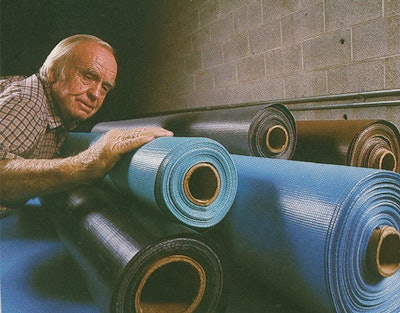
After 20 years in the business, Adam Marble still gets excited about installing automatic pool covers. In fact, you could say that the co-owner of CoverSafe — based in Thomaston Conn., with service centers in three other states — is more enthusiastic about the business than ever.
"Pool covers have become much more widely accepted," he says. "The designs have improved, the materials have improved, and the systems are more reliable."
Indeed, covers have come a long way — from the plastic hooked-on tarps and large, roll-away mechanisms to the invention of the first automatic pool cover by Cover-Pool's Joe Lamb in 1959. Lamb's product marked an important evolution for the industry, but the technology behind covers remained relatively unchanged for decades.
Big and bulky mechanisms created eyesores at the end of a pool, as the aluminum lids and coping required to conceal them were oversized. In some cases, that lack of aesthetic appeal proved to be dealbreaker, and pool owners opted not to purchase a cover.
In recent years, however, automatic pool covers have once again evolved to address the increasing needs of pool design. They now feature smaller mechanisms, invisible installation options and can even be tied into existing automation capabilities. Today's automatic pool covers can
go over any size or shape of pool and spa, including infinity edges.
These improvements add more reasons to sell covers to your customers, according to Lamont Drechsel, vice president and general manager of Utah-based Cover-Pools.
"An automatic cover that extends the pool season, adds an invaluable layer of safety, and reduces energy consumption more than any other item that can be added to a pool is a benefit to the homeowner," he says. "However, homeowners want those features without detracting from the beauty of the pool. So, a pool cover that is invisible to the swimmer once uncovered drives most innovation today."
 Photo courtesy Cover-Pools
Photo courtesy Cover-Pools
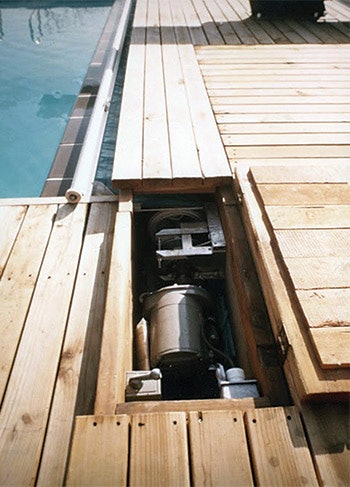 This tiny offset drive mechanism fits flush under the deck and allows the pool cover to retract gracefully, under its own hidden power. (Photo courtesy Cover-Pools)
This tiny offset drive mechanism fits flush under the deck and allows the pool cover to retract gracefully, under its own hidden power. (Photo courtesy Cover-Pools)
'EVERY INCH COUNTS'
The latest innovation efforts combine smaller drive mechanisms that can be hidden under standard-size coping with vanishing lid brackets that support heavy coping stones over the automatic cover. Recessed installation creates that "invisible" cover experience for the pool owner. In some cases, lids extend right to the edge of the pool. That way, when the cover is opened, its leading edge retracts under the vanishing lid stones and hides it completely.
RELATED: Automatic Pool Covers: The Everyday Essential
Additionally, Cover-Pools recently introduced stainless-steel cables to its systems, which can be used instead of polyester ropes to winch the cover over the pool. Ropes, Drechsel notes, are larger than the equivalent- strength cable. So the use of cable reduces the storage room required on the mechanism reel, subsequently decreasing the size of the drive mechanism system by about 3 to 4 inches. "Every inch counts when you're trying to hide something underneath pool coping," he says.
Marble and other installers have built their entire businesses around pool covers, because not every pool builder wants to deal with that aspect of a project. Automatic covers are not as easy to install as a pump or heater, and they require some additional expertise that might be out of the builder's comfort zone.
That said, subcontracted cover installers often have little contact with the end users, meaning it's up to the builders to educate their own customers on both the practical and visual advantages of an automatic pool cover.
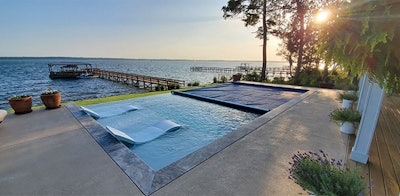 Photo courtesy Cover-Pools
Photo courtesy Cover-Pools
"We want all builders to know about design changes in automatic covers because, really, they're the ones who attract people to pool covers," Drechsel says. "We want them, as well as the homeowner, to have good experiences with covers."
Marble says some of the builders he works with initially were not aware that automatic cover manufacturers now offer space-saving offset motor designs that require very little space for the motor sidebox — and thus leave a smaller footprint. Marble says the builder he contracts with began using the streamlined systems as soon as he informed them.
"Now, we can give builders an answer that's much easier for them," Marble says. "In the past, our only answer was to give them an aluminum tray that they would put the decking material over to cover the end of the cover box. But the tray has a cost, the additional decking material on top of the tray has a cost, the future service calls to dismantle the tray to be able to service the cover system has a cost."
Today's smaller mechanisms cost more than their predecessors, but they also make pool covers less obtrusive. "You don't want to detract from the pool, and these lower offset mechanisms accomplish that," Marble says. "They're made so that the automatic cover now blends in with the swimming pool."
But can innovation go too far? Kris Windmueller thinks so.
"I'll be honest and say I don't agree with going smaller," says the president of Pool Cover Solutions of the Southeast LLC in Charleston, S.C. "I see a need for a really small, 14-inch offset in certain situations, but we don't want builders and homeowners seeing what is probably the smallest constraint possible and deciding to make that the norm. That's like building a garage for your 7-foot-wide car and then wanting the garage door to be 7 feet, 2 inches wide. There's not a whole lot of room for error if you're doing minimum widths all the time."
He adds that the more traditional 24-inch offset still manages to hide the cover's housing effectively for most of his customers. "I just think it's a matter of having a conversation with the dealer, the builder or the homeowner to let them know I'd rather handle each situation on a case-by-case basis than just make a 14-inch offset the norm."
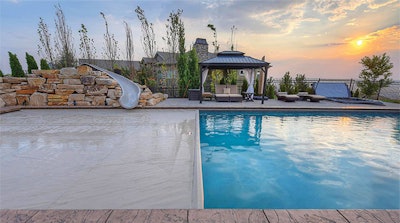 Photo courtesy Automatic Pool Covers
Photo courtesy Automatic Pool Covers
'THE INDUSTRY HAS ADAPTED FOR COVERS'
The obvious built-in safety and improved aesthetics of automatic pool covers are only two of the factors driving sales these days.
More pool owners also are seeing the connection covers have with water and energy conservation. A cover conserves water by reducing evaporation (up to 95%, according to some estimates) and subsequently lessening chemical use. Cover-Pools claims an uncovered 16-by-36-foot pool can lose up to 180 gallons of water (and the chemicals in it) every week to evaporation.
RELATED: The Case for Automatic Pool Covers
"As the western U.S. battles droughts, I expect covers will continue to gain popularity," Drechsel says. "There are increasingly more local building codes that are requiring pools be covered if they're heated," Marble says. "So people are more cognizant that their pools use energy to heat and that the cover also saves water. But not all pool owners know that. Nowadays, builders put auto-fills on pools, because they lose a lot of water without a cover. If the pool owner looks at their water bill, though, they'll know."
A pool cover is especially critical on indoor pools, according to Windmueller. "They need it the most, because of all the humidity in there," he says.
Another trend driving consumer interest in pool covers is enhanced automation. While a pool owner likely will never be able to control an automatic pool cover from an app — "We want everybody to be in full view of the pool to operate it, for safety reasons," Windmueller says — there are other ways automation technology can be incorporated into pool covers.
"When the cover is closed, you can still reduce the salt chlorination, you can still reduce the pump speeds," he says. "All of the equipment manufacturers have ways to tie automatic covers into their systems. I think it's pretty cool that the industry has adapted for covers."
Given all of these positive developments, it's easy to understand why Marble remains excited about automatic pool covers. "Once customers have one and experience all the benefits of an automatic cover, they tell their neighbor that they would never own a pool without one," he concludes. "Of course, then the neighbor buys a pool with a cover, and the experience just repeats itself."
This article first appeared in the September 2021 issue of AQUA Magazine — the top resource for retailers, builders and service pros in the pool and spa industry. Subscriptions to the print magazine are free to all industry professionals. Click here to subscribe.



































